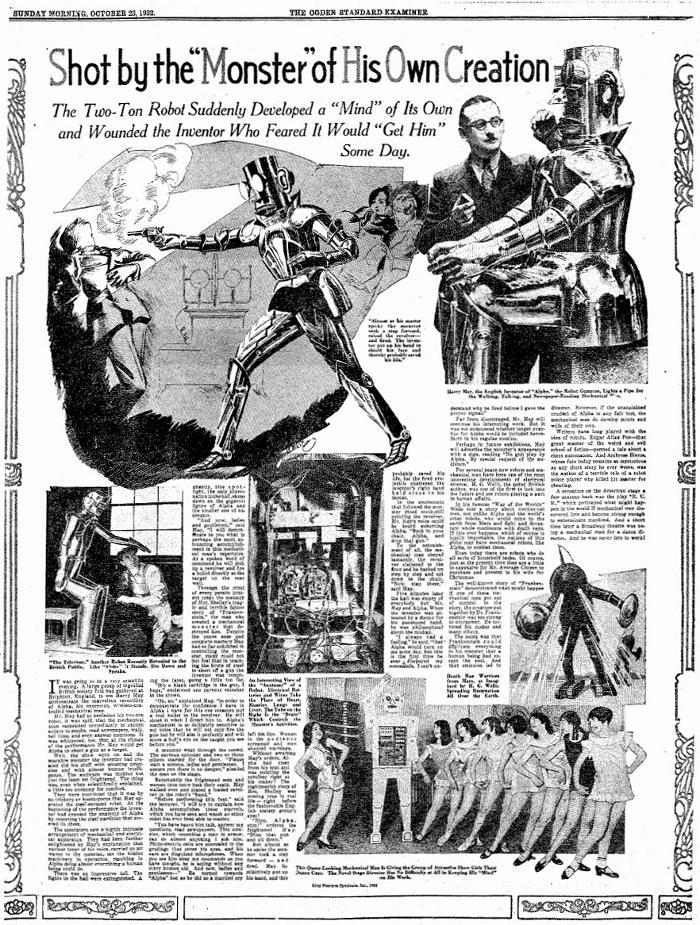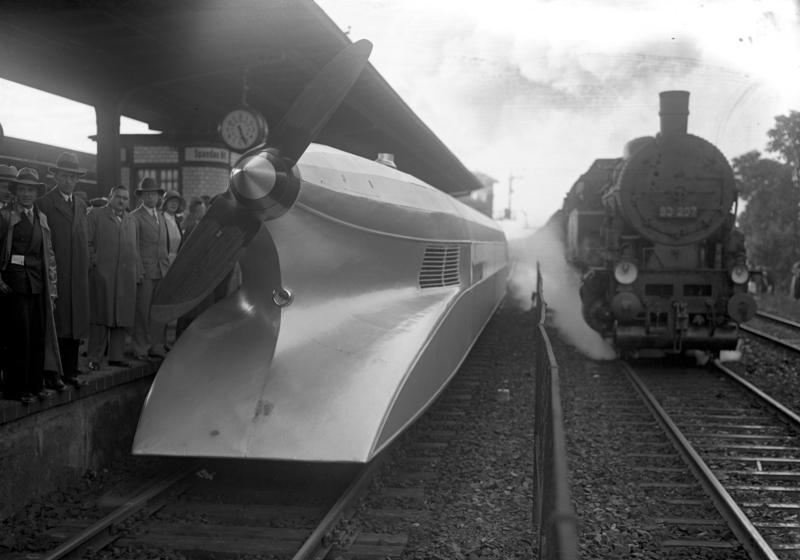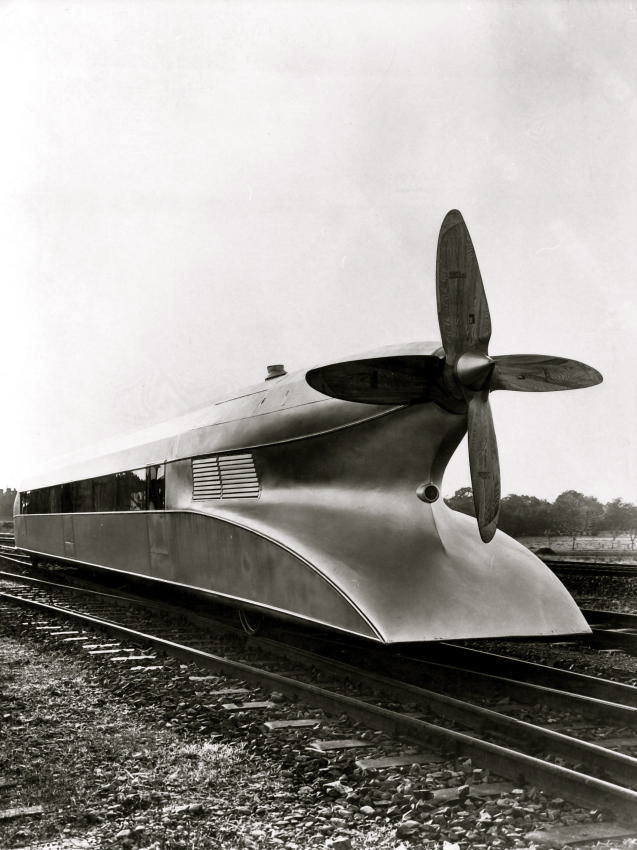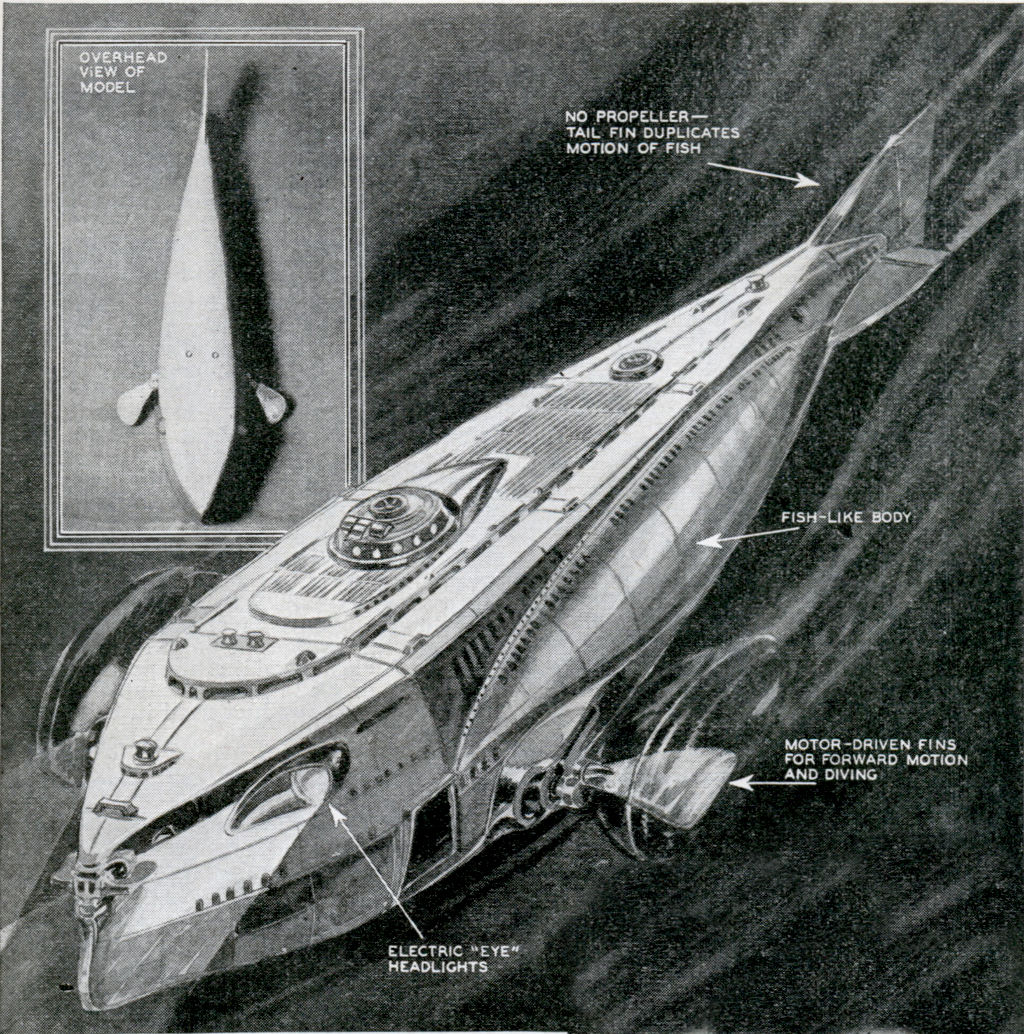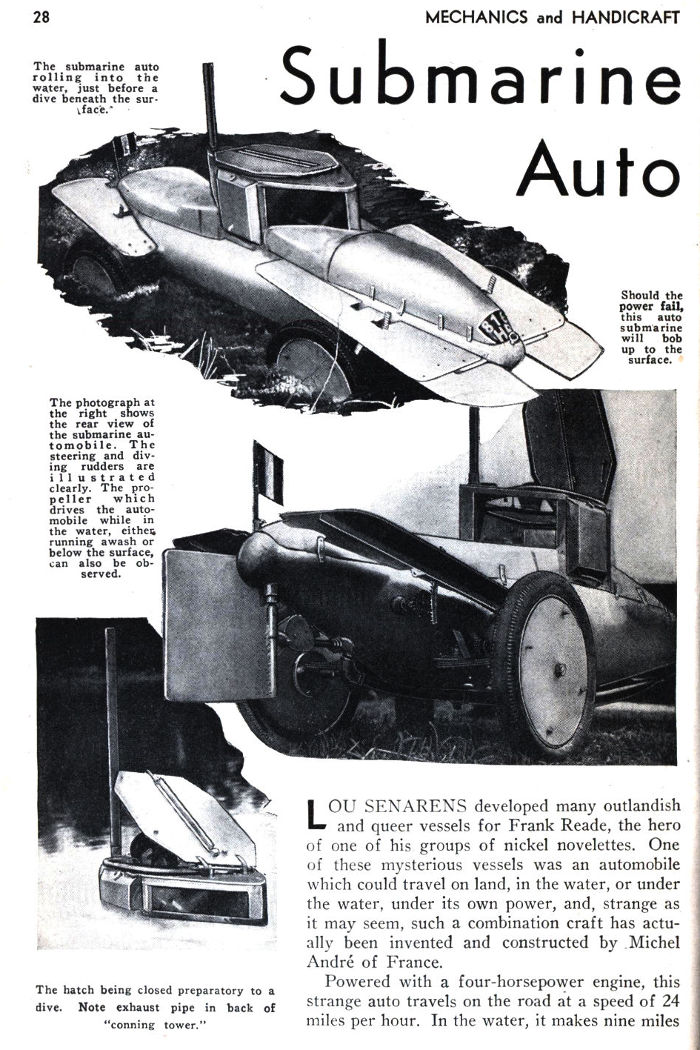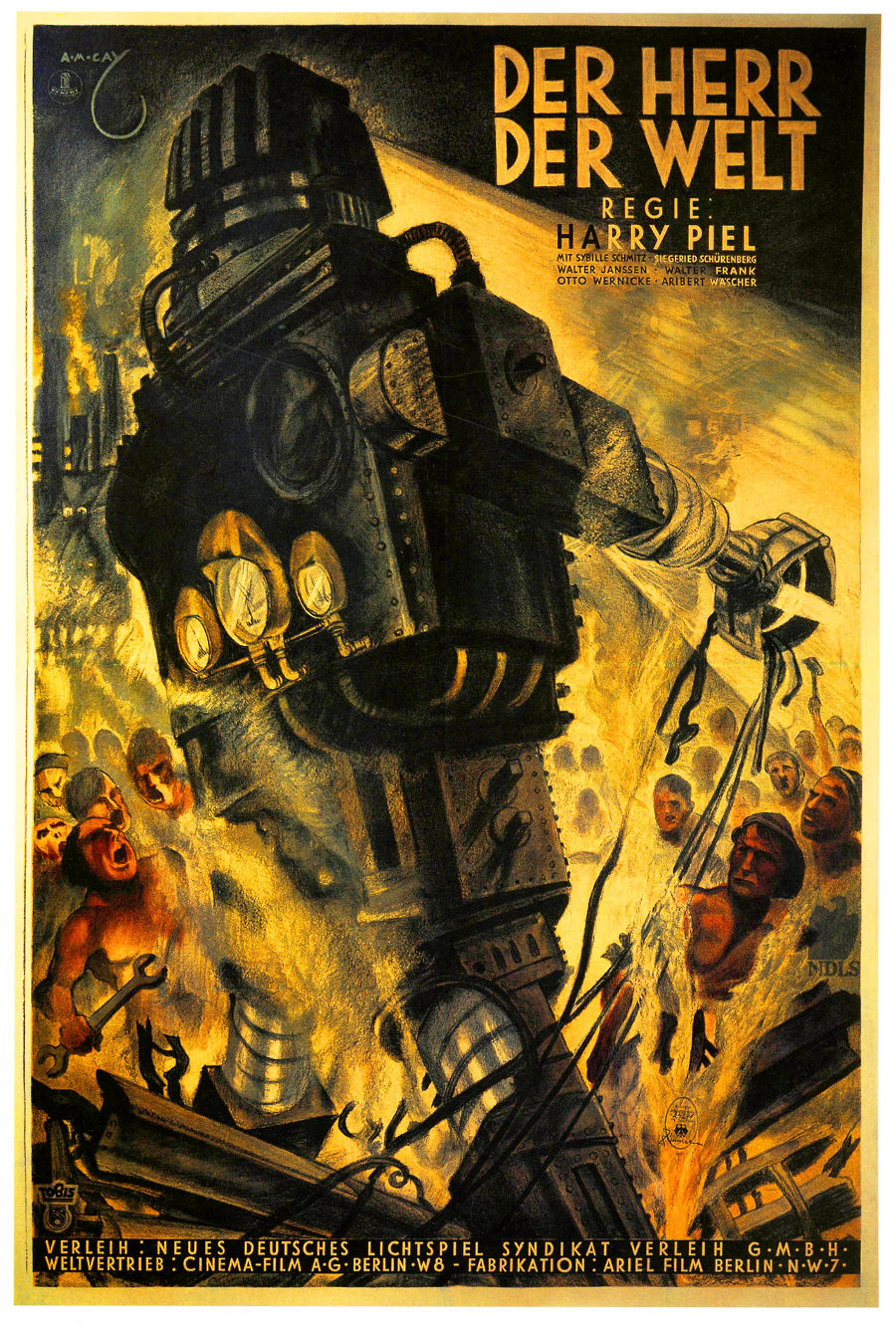Ogden Standard-Examiner, October 23, 1932
Category: Weird Science
Schienenzeppelin, 1929
The Monster and The Ape, 1945
The Monster and the Ape was the 26th serial released by Columbia Pictures and was released in 1945. The Monster of the title is the “Metalogen Man”, a robot created by Professor Franklin Arnold. After displaying his invention, the robot is stolen by Professor Ernst with the aid of his trained ape, Thor. Ken Morgan leads the attempts to recover the stolen robot. (Wikipedia)

“A Weird Battle Against Crime!”
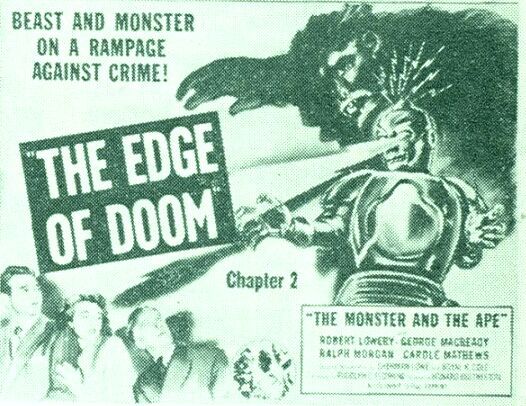
Iron Whale, 1933
Iron Whale Swims Ocean Bottom Like Fish
Denizens in the ocean depths may soon find prowling among their haunts a huge iron monster swimming with fishlike motions and bearing a close resemblance to themselves. This strange monster is to be built from plans devised by Herr Schiff, a German engineer, who has already constructed a workable model for his astounding brainchild, which is shown in accompanying photos. The curious undersea craft is equipped with two fins and a tail which operate in the same manner as do these elements of a live fish. Intended chiefly for the exploration of the ocean bottom, the ship is said to be capable of maneuvering with all the flexibility of its fleshy prototype. Two electric eyes placed in the head for observation purposes make the resemblance to a sea serpent more complete. The craft was designed and constructed after an extensive study of the swimming motions of many types of fish, particularly the larger sharks and whales. (Illustration by Norman Saunders)
Dr. Aizawa’s Remote Controlled Train, 1936
Dr. Jiro Aizawa and his remote control robot train, featured in the November 1936 issue of Popular Mechanics
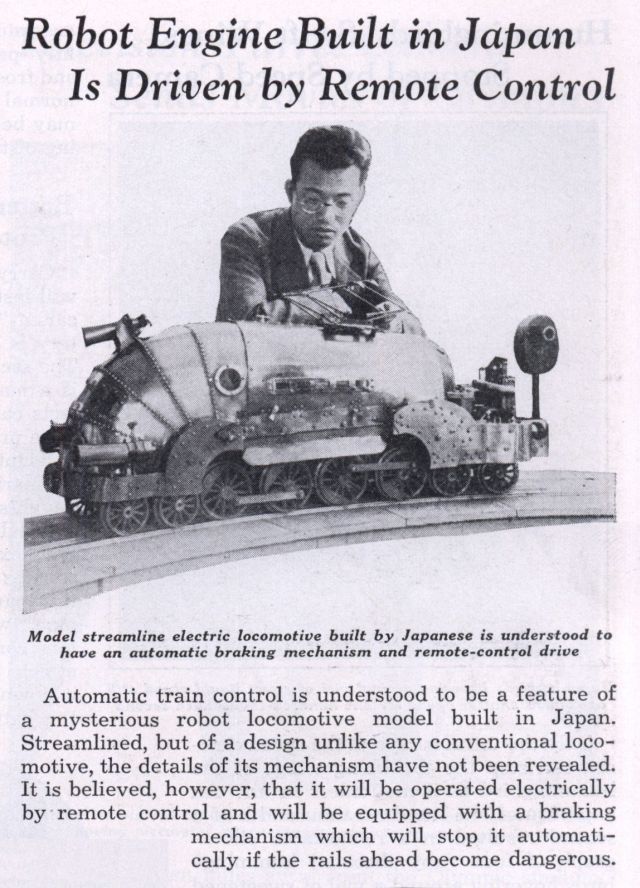
Automatic train control is understood to be a feature of a mysterious robot locomotive model built in Japan. Continue reading “Dr. Aizawa’s Remote Controlled Train, 1936”
Bullet-Proof Shields, 1933
Popular Science, 1933
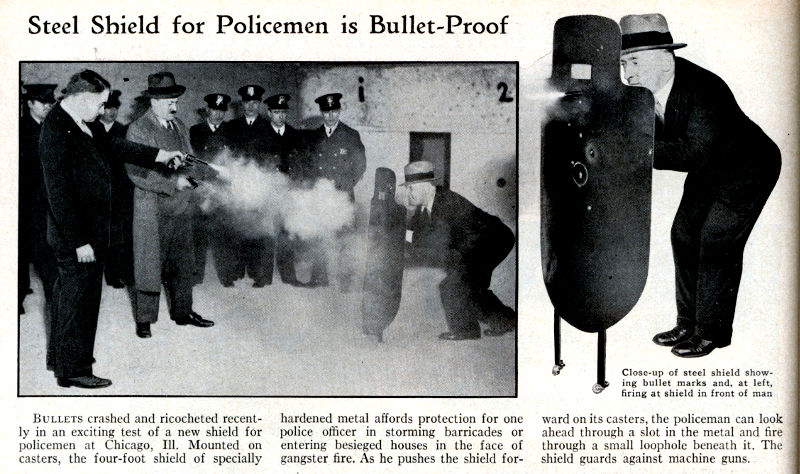 Continue reading “Bullet-Proof Shields, 1933”
Continue reading “Bullet-Proof Shields, 1933”
Floating Ocean Airport, 1934
UNCLE SAM ASKED TO BUILD Floating Ocean Airports – Popular Science, February 1934
REDESIGNED and improved since its earlier forms were described in this magazine, a new type of “seadrome” or floating airport, is proposed by its inventor, Edward R. Armstrong, as the basis of a modernized plan to bridge the Atlantic with a string of artificial islands. His project, which has attracted the interest of U. S. Government officials, is intended to provide twenty-hour airplane service between America and Europe. It calls for the anchoring of five of the seadromes between America and Spain, at about the latitude of Washington, D. C, to serve as refueling stations about three hours’ flight apart. Planes using these islands in stepping-stone fashion could transport heavy pay loads at high speed, since their loads of gasoline would be light. Continue reading “Floating Ocean Airport, 1934”
Submarine Auto, 1936
The Master of the World, 1934
Popular Detective, April, 1946

